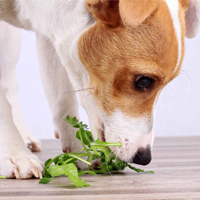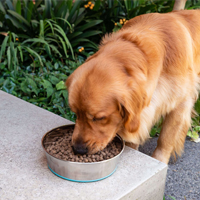
Safely Using Mullein for Your Dog
Mullein is one of the most commonly suggested herbs for dogs – and for good reason.
For dogs, there is evidence that suggests its use in treating respiratory illnesses like the common cold. It’s also great for calming the pain of ear aches and treating mild ear infections. There is also evidence to support the usage of mullein leaves as a poultice for soothing the skin and for providing antimicrobial sustenance for irritations, wounds, bites, and burns.
How Mullein Can Help Your Dog?
There are several applications for mullein worth exploring thanks to its antimicrobial and antiviral properties. It contains mucilage and small amounts of saponins and tannins, which sets it up as a quality cough suppressant. It soothes mucus membranes and can treat kennel cough.
- Mullein Tea: Mullein’s use as a natural expectorant shouldn’t be discounted, as the leaves can be used to treat everything from the common cold to coughing, bronchitis and even asthma. It can even assist in reducing the symptoms of allergic reactions, with a mullein tea suggested for the suppression of various respiratory concerns. See the dosage for mullein tea below.
- Mullein can aggravate some skin types, so testing on a small area should be done first when using a poultice. Mullein leaves can nevertheless make for a terrific treatment selection for irritation, wounds, bites, and burns. (https://mundonow.com)
- Some pet owners have successfully used mullein for ear infections. Read more below.
Directions & Dosage for Teas, Tinctures & Drops
Tea: You can use tea bags made from organic Mullein as well. To brew your own, you’ll want to make the tea fairly strong and give 10 milliliters or a little less than 2-1/2 teaspoons for every 30 lbs of your dog’s body weight twice daily. Recommended for respiratory issues.
How to make your own glycerin tincture:
A tincture is best for those dogs that won’t readily drink the tea. Using a mason jar, fill it half way with dried mullein that is chopped well. In another mason jar, mix three parts of organic vegetable glycerine to one part distilled water. Gently shake the jar to mix. Pour the liquid over the dried mullein and cover completely until the jar is full. Gently stir daily for a period of 4-6 weeks. Strain by using cheesecloth.
Poultice for wounds, bites & burns: Pulp up a few mullein leaves with a little water and apply directly to the affected area.
Ear drops for mild infections: To make a quality mullein mix, Randy Kidd suggests packing both leaves and flowers in a jar. Cover the mixture with olive oil and let sit for two to three weeks. To add more antibiotic support, consider adding a clove of garlic. Strain the mixture and apply several drops to the ear canal, Cup the ear with your hand and gently massage the base of the ear to moisten the ear with the drops. Wipe away any excess with a tissue. This may help in fighting mild infections. Use for at least 3-5 days.
If the infection still persists, you can try this solution that works very well. Here’s a link to read the reviews and to also purchase from their store on Amazon: Zymox
What You Should Watch Out For?
Mullein is a safe and very versatile option for dogs and cats, but some say it should be kept away from fish and amphibians.
However, it’s believed that reptiles in the wild do benefit from the plant’s leaves for shelter as stated here in this article. Keeping on the safe side, ingestion for those creatures may be harmful, so keep the family goldfish or frog away from your mullein concoctions. It’s said that mullein has been used as a piscicide (fish poison) due to high levels of odorless rotenone.
As mentioned above, the poultice may cause some irritation with some four-legged friends, so it’s always best to check it out on a small portion of skin first. There are no noted cases of serious problems, but it’s never a bad idea to exercise care when trying something new.
Reasons to Use Mullein
Mullein is a brilliant option for your herbal treatment collection due to its effectiveness in fighting everything from the common cold to ear infections to skin afflictions. It is a multipurpose and safe element for dogs, even if it does spell out a nightmare for the fish and frogs of your world.
One final note: when applying the mullein oil to your dog’s ear infection, make sure that you are reaching the affected area and putting the product deep into the ear canal. If you’re uncertain, it’s never a bad idea to consult your veterinarian for the proper technique of administering ear infection care.
About Mullein
Verbascum or “velvet plant” is a biennial or perennial plant native to Europe and Asia and has a long history of use as an herbal treatment, even though its arrival in North America is relatively recent. The flowers are popular in Austria for use in teas, for example, while some use mullein flowers in baths or as compresses to treat a host of disorders.
The flowers are generally of most interest in mullein, with high levels of vitamins A, B-complex and D found along with calcium, iron, potassium, and sulfur. The leaves can be used in a poultice, as mentioned, and in a tea. And the leaves and flowers can be used together to create an oil to assist with ear infections.
References: Herbs for Pets by M.L. Wulff-Tilford and G.L. Tilford










